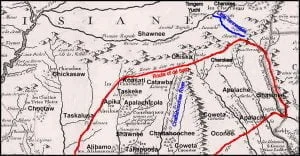Plans for the Colonization and Defense of Apalache, 1675
Florida June 15, 1675 To His Majesty D. Pablo de Yta Salazar hereby renders account of the investigation made in regard to the most suitable places in these Provinces for settlement by Spanish families. All are agreed that the town of Apalache and the surrounding territory is best because of the great fertility of the soil. If the settlers be farmers the crops will be abundant on account of the richness of the land, as may be seen by the wheat which the friars sow for their sustenance. Pablo de Yta Salazar gives in detail the immense advantages of sending … Read more


